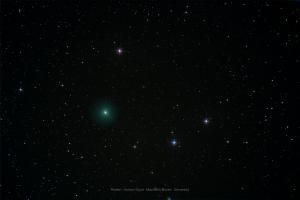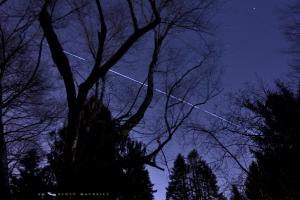Celebration of Space - March 27, 2020
So your stuck at home with the kids (or the parents), and you just need an out! Well here are a bunch of cool STEM projects that you can do with your kids (or with your parents) that can get you outside and having fun! Compliments of NASA, build and launch numerous types of rockets, test your skills at making an Apollo Mission Landing Capsule, and more. Check out the numerous activities.
What if you are just not interested in the K-4 STEM activities? You probably have a load of work to do anyway, or perhaps your parents (kids) have wrangled you into home maintenance tasks (yay!). Regardless, there are some really awesome STEM activities for the older, more advanced, super geek in the family. Here are a couple ideas that you can do with your parents, with your kids, or with you awesome self:
- Build your own weather station using a Raspberry Pi, weather sensors, an enclosure, and a load of engineering enthusiasm!
- Build a time-lapse camera using a Raspberry Pi.
- Build a photo booth using a Raspberry Pi. If you really skilled, figure out how to do it with an old point and shoot camera for higher image resolution!
- Build a RetroPie using a Raspberry Pi and geek out with loads of old school games (Zelda marathon anybody?).
Regardless, it appears we will be stuck inside for a bit longer, so why not make the best of the extra time that you may have and geek out a bit with STEM!
A few weeks ago, we wrote about a new comet in the sky that experienced an outburst and increased in brightness, substantially. That comet is Comet C/2019 Y4 Atlas, a comet that has become the brightest comet in the sky at this time. This past week we have increased our observations of Comet Atlas and colleagues have begun imaging the bright comet. At this time Comet Atlas is visible in binoculars and may become naked eye visible quite soon. The comet’s coma (tenuous atmosphere that forms around the comet’s nucleus) has become about half the size of the Sun’s diameter. The comet is currently in the constellation Ursa Major and will move into Camelopardalis this coming week, which makes the comet prime for viewing over our location. We will post a finder chart this weekend on our Facebook and Twitter (@FrostyDrewOBSY) pages. Make it a nightly event, on clear nights, to step outside and catch a view of Comet Y4 Atlas before the Moon becomes too bright. Check out this image that Bob Horton and Scott MacNeill of Brown University captured and processed (Bob captured the data, Scott processed the data) or Comet Y4 Atlas.
This coming weekend and week, evening passes of the International Space Station (ISS) continue over the US and the Northeast. This is another fantastic reason to step outside every evening. Think about how the ISS residents must feel in comparison to your confinement. Most ISS residents spend six – nine months on the station, isolated from the exterior vacuum of space. Here are all passes for the next seven nights:
Fri, Mar 27 at 8:20pm starting in the NW, rising to 14º, heading towards the NE
Sat, Mar 28 at 9:10pm starting in the NNW, rising to 18º, heading towards the N and into orbital sunset
Sun, Mar 29 at 8:23pm starting in the NNW, rising to 16º, heading towards the NE and into orbital sunset
Mon, Mar 30 at 7:35pm starting in the NNW, rising to 15º, heading towards the NE
Mon, Mar 30 at 9:12pm, starting in the NW, rising to 28º, heading towards the N and into orbital sunset
Tue, Mar 31 at 8:24pm, starting in the NW, rising to 23º, heading towards the NE and into orbital sunset
Wed, Apr 1 at 7:37pm, starting in the NNW, rising to 19º, heading towards the ENE
Wed, Apr 1 at 9:14pm, starting in the NW, rising to 48º, and into orbital sunset.
Thu, Apr 2 at 8:26pm, starting in the NW, rising to 45º, heading towards the E and into orbital sunset
Put these times on your calendar and set your alarm. Times are applicable for Southern New England and generally acceptable for the Northeast. For daily pass times for our region, visit the Frosty Drew daily satellite pass predictions list. For pass times specific to your location, visit NASAs Spot the Station.
We know it’s been a tough change these past couple weeks, but keep your eyes to the sky. If you missed out on our newsletter last week, we wrote about surviving social distancing with activities that you can do from home or as a family to stay connected to space. Stay positive, and stay connected to each other! Physical distancing does not mean no communicating, set aside a time every day to video chat with your friends, or your extended family members. Talk about what is happening in space, or things that you can do together remotely, and maintain a positive attitude. Positivity is contagious and you can easily spread it to others! We’ll see you all soon!
- Author:
- Scott MacNeill
- Entry Date:
- Mar 27, 2020
- Published Under:
- Scott MacNeill's Columns





